When someone mentions a home sewing machine, most people immediately think of Singer. Indeed, many Americans saw their grandmothers use this machine type when they were children. Even though the first Singer sewing machine appeared in 1851, it is still present on the market worldwide.
This article aims to help you determine the Antique Singer sewing machine identification and price guide before buying one. Be aware that these collectibles’ value depends on various factors, so you should decide which model it is and carefully check its current state before buying one.
Table of Contents
Antique Singer Sewing Machine History
In 1850, Isaac Merritt Singer founded I.M. Singer and Co. He didn’t invent the first sewing machine, but the original design was invented and created by Elias Howe. However, Singer upgraded the already existing model and made it durable, precise, and high-quality.
The primary difference between all sewing machines existing at that time and the advanced Singer machine’s model is in a flat needle the new model offered. Its advantage is that it worked vertically instead of horizontally, unlike the one Howe originally envisioned. With this change, the machines became easier to make and use.
Singer was a wise businessman, so he was the first to devise a popular installment payment plan for his sewing machines. Only companies and factories had owned these machines until that moment, but his idea made them affordable to average Americans.
Crucial features
Over the years, Singer’s company added various helpful functions to sewing machines, such as:
- A treadle
- A support table
- A presser foot
- A traverse shuttle
- Lock stitching
- Gear operation
- Roughened feed wheel slot
In addition, the company continued to work on the development of portable and affordable models and likewise used door-to-door sales.
However, Isaac Singer’s private life filled with scandals forced him to retire from the company in the 1860s. His death in 1875 didn’t affect the future company’s success.
I.M. Singer and Co. first became Singer Manufacturing Company, only to eventually change its name to Singer Company in 1963. To this day, this name is synonymous with quality sewing machines.
Antique Singer Sewing Machine Most Popular Models
Although the Singer company today produces modern sewing machines, some of their antique models are still popular in numerous households. The primary reasons for these models’ popularity are probably the high quality and ease of use.
Today it can be a problem for you to find a complete list of all sewing machine models made by Singer. Yet, the undeniable fact is that every model manufactured before 1900 is considered antique. Let’s take a look at some of the most popular antique pieces.
1. Patent model, No. 8,294, 1851
This Singer sewing machine patented in 1851 was the first model this company ever produced. It came with a foot pedal, a table supporting sewing clothing, and a packing crate.
Singer sewing machine per year |
|
| Production year | Model |
| 1856 to 1859 | Turtleback |
| 1859 to 1865 | Letter A Family |
| 1865 to 1902 | New Family or Fiddle base |
| 1880 to 1890 | Industrial Flying Dutchman |
| 1895 to 1957 | Class 15 |
| 1906 to 1908 | 9W1, 9W2, 9W3, 9W4, 9W5 |
| 1909 to 1913 | 9W7, 9W8, 9W9, 9W10 |
| 1912 to 1941 | 127 Class |
| 1920 to 1937 | 101 Class |
| 1933 to 1960 | 201 Class Featherweight |
| 1935 to 1964 | 201 Class |
| 1947 to 1957 | 221 K |
| 1954 | 306 |
| 1956 to 1962 | 320 K |
| 1957 to 1960 | 401 A |
| 1958 to 1960 | 401 Slant-o-Matic |
| 1968 to 1970 | 221 K7 |
| 1974 | 160 M |
2. Singer Turtleback model
This machine was the first constructed model in 1856 to be used exclusively at home. Its construction had a vibrating overhanging shaft that served to actuate the needle, driving wheel, a rocking treadle, and a piston shuttle.
The pedal with the drive wheel moved the mechanism using a leather belt. This model was certainly not the best made, but most sewists appreciated its possibilities. It is pretty rare nowadays and one of the favorites among collectors, so you can expect it to be pricy.
3. Singer Letter A Family model
Letter A Family model was constructed in 1859 from high-quality metal. This long-lasting and improved machine model with a broader foot treadle immediately gained exceptional popularity. Since most of them were in use for decades, it is pretty challenging to find one in working order on the current market.
4. Singer New Family (Fiddle Base) model
The New Family sewing machine with an adjustable feed and a lockstitch appeared on the market in 1865. It was black with an attractive gold scroll. After its renaming to the Singer Model 12, its production continued for 40 years.
A few things set this efficient and durable sewing machine model apart from the others. It was among the first lock stitch machine and capable of sewing through multiple fabrics.
It was the first high-volume mass-produced sewing machine on the American market. Many families bought this model despite the high price, making it available on the current market. Believe it or not, you can effortlessly find some in excellent condition despite their age.
5. Singer Medium model
In 1867, Singer modified the New Family model and created a Medium sewing machine. He added additional space under the arm, making manipulating with large fabric amounts more effortless.
6. Industrial Flying Dutchman model
The Industrial Flying Dutchman was a highly popular small machine for industrial production in the 1880s. It was narrowly specialized with a primary function to trim and finish the edges while sewing.
7. Singer Class 15 model
The Singer 15 is essentially an improved and mechanically more advanced Family model. This sewing machine production began in 1895, and the primary manufacturer’s goal was to offer customers an entirely new appearance.
The new model went through a few crucial mechanical changes, facilitating sewing. Most admirers agree that the Singer 15 is one of the most successful models. It experienced several improvements during more than 100 years of production.
Antique Singer Sewing Machine Identification
Since Singer produced a significant number of sewing machines and many different models over the years, you always need to check the mark to identify which one you have.
By 1900, the Singer Company produced nearly 17 million machines. Each had a number indicating the production year. Checking it is an excellent way to ensure that your sewing machine is antique because only those manufactured before 1900 can be in this group.
Antique Singer machines’ serial marks |
|
| Marks | Year |
| 1 to 100 | 1850 |
| 101 to 900 | 1851 |
| 901 to 1,711 | 1852 |
| 1,712 to 2,521 | 1853 |
| 2,522 to 3,400 | 1854 |
| 3,401 to 4,283 | 1855 |
| 4,284 to 6,847 | 1856 |
| 6,848 to 10,477 | 1857 |
| 10,478 to 14,071 | 1858 |
| 14,702 to 25,024 | 1859 |
| 25,025 to 43,000 | 1860 |
| 43,001 to 61,000 | 1861 |
| 61,001 to 79,396 | 1862 |
| 79,397 to 99,426 | 1863 |
| 99,427 to 123,058 | 1864 |
| 123,059 to 149,399 | 1865 |
| 149,400 to 180,360 | 1866 |
| 180,361 to 223,414 | 1867 |
| 223,415 to 283,044 | 1868 |
| 283,045 to 369,826 | 1869 |
| 369,827 to 497,660 | 1870 |
| 497,661 to 913,999 | 1871 |
| 914,000 to 963,999 | 1872 |
| 964,000 to 1,349,999 | 1873 |
| 1,350,000 to 1,914,999 | 1874 |
| 1,915,000 to 2,034,999 | 1875 |
| 2,035,000 to 2,154,999 | 1876 |
| 2,155,000 to 2,764,999 | 1877 |
| 2,765,000 to 2,924,999 | 1878 |
| 2,925,000 to 3,679,999 | 1879 |
| 3,680,000 to 3,939,999 | 1880 |
| 3,940,000 to 4,889,999 | 1881 |
| 4,890,000 to 5,483,999 | 1882 |
| 5,494,000 to 6,004,999 | 1883 |
| 6,005,000 to 6,524,999 | 1884 |
| 6,525,000 to 7,046,499 | 1885 |
| 7,046,500 to 7,471,599 | 1886 |
| 7,471,600 to 7,918,999 | 1887 |
| 7,919,000 to 8,615,499 | 1888 |
| 8,615,500 to 9,436,999 | 1889 |
| 9,437,000 to 9,809,999 | 1890 |
| 9,810,000 to 10,629,999 | 1891 |
| 10,630,000 to 11,338,999 | 1892 |
| 11,339,000 to 11,913,499 | 1893 |
| 11,913,500 to 12,475,499 | 1894 |
| 12,475,500 to 13,387,999 | 1895 |
| 13,388,000 to 14,047,999 | 1896 |
| 14,048,000 to 14,919,999 | 1897 |
| 14,920,000 to 15,811,499 | 1898 |
| 15,811,500 to 16,831,099 | 1899 |
The company used different combinations of serial numbers for various sewing machines over the years. All antique models produced until 1900 had only numbers.
After that year, letters appeared next to the numbers in the serial marks. You can find a mark in different places, depending on the model and manufacturing year. The most common include:
- On the bearing or throat of the machine
- Under the machine
- On the model’s right side
- On the model’s front or side
This information can help you determine your machine model and age and thus its current value. However, you should be prepared that sometimes this number is not visible due to the models’ age. In such a case, you can try to determine the machine model and age using its technical characteristics and appearance.
Antique Singer Sewing Machine Price Guide
As you can guess, not every sewing machine’s old model has a high value. In most cases, their rarity primarily affects the price. Since the company practiced mass production and produced millions of sewing machines, only a few models are rare. The next thing to consider is their condition.
Antique and vintage Singer sewing machine price range |
|
| Model | Price |
| Turtleback | $500 to $1,500 |
| Fiddle Base | Approximately $2,000 |
| 99K | $50 to $130 |
| 128 | $50 to $120 |
| 15 | $65 to $200 |
| 201 | $60 to $200 |
| 301 | $80 to $200 |
| 401 | $75 to $225 |
| 500 | $150 to $280 |
Antique Singer sewing machine condition
As with other antiques, the Singer sewing machine’s condition significantly affects its value. Always take a good look at your model or ask a professional to assess which of the following categories it belongs to.
Excellent – This sewing machine shows slight signs of use, including minor scratches, but the metal construction and color are well-preserved and shiny. The crucial things are visible serial marks and undamaged stickers that are all in number. Only a model with all these features can get the highest grade.
Very good – This assessment indicates that the machine was handled with care, so its appearance is still attractive and its functions well preserved. You can see needle marks and a few more noticeable scratches on it, but all parts are present, and there are no rust traces.
Fair – A machine in this condition shows significant signs of wear. You can notice the damaged color and visible rust traces. Even though some accessories necessary for its operation are missing, it is still functional and suitable for restoration.
Poor – This sewing machine’s condition indicates it is significantly damaged and is no longer in operation. It is probably not suitable for repair, but you can use it for parts.
Antique Singer sewing machine value
Your machine value can be affected by several factors.
Historical value – An antique Singer machine can have historical significance if it originates from the early period of the sewing machine’s development. In that case, the only relevant factor is whether its production year is in the middle of the 1800s.
Singer Featherweight sewing machine price range |
|
| Model | Price |
| 221 | $200 to $600 |
| 222K | $800 to $1,300 |
Collectible value – Your machine can also have a collectible value that depends on collectors’ interests. Some collect only historically valuable machines or those from a particular manufacturer. However, you can find collectors interested in the decorative look of your model and make a deal accordingly.
Sentimental value – Sometimes, you should consider sentimental Singer sewing machine value. It can be invaluable to you if it has been in your family for generations, so you should think twice before selling it. If it belonged to your grandmother or another favorite family member, you might regret such a step in the future.
Places to look for antique sewing machine
If you are looking for one antique Singer sewing machine, the best places to look for it are:
- Estate sales
- Flea markets
- Classified ads at sites like Craigslist or Facebook Marketplace
- Auctions
- Antique stores
Generally, the standard mass-produced models’ price ranges from $0 to $500. In most cases, it depends on each machine’s condition and where you decide to buy one.
For instance, one Singer sewing machine from 1890 was sold for only $19, while others often reached hundred dollars. As you can see, the production year couldn’t guarantee a high price, but numerous other factors determined it.
Summary
Durable and high-quality Singer sewing machines still have an enviable reputation in a very competitive market. Therefore, it is not surprising to find an antique model older than a century that is still in use.
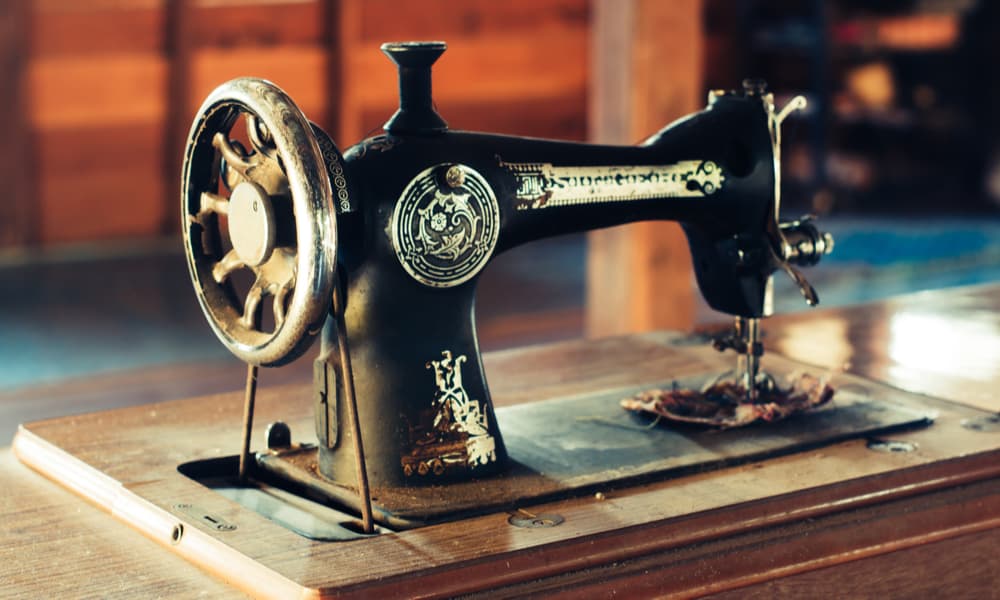
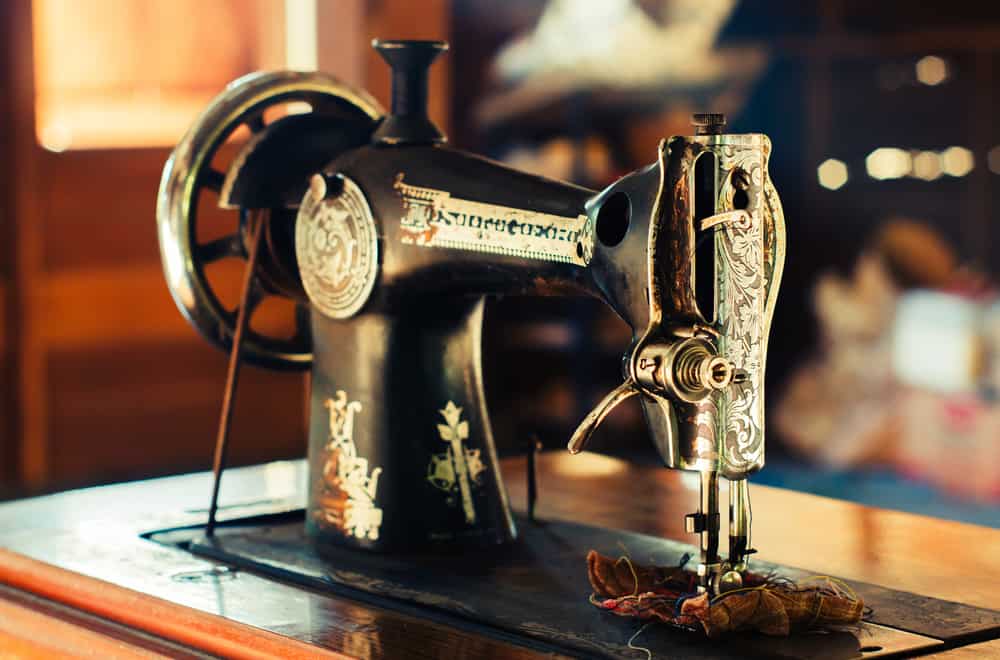
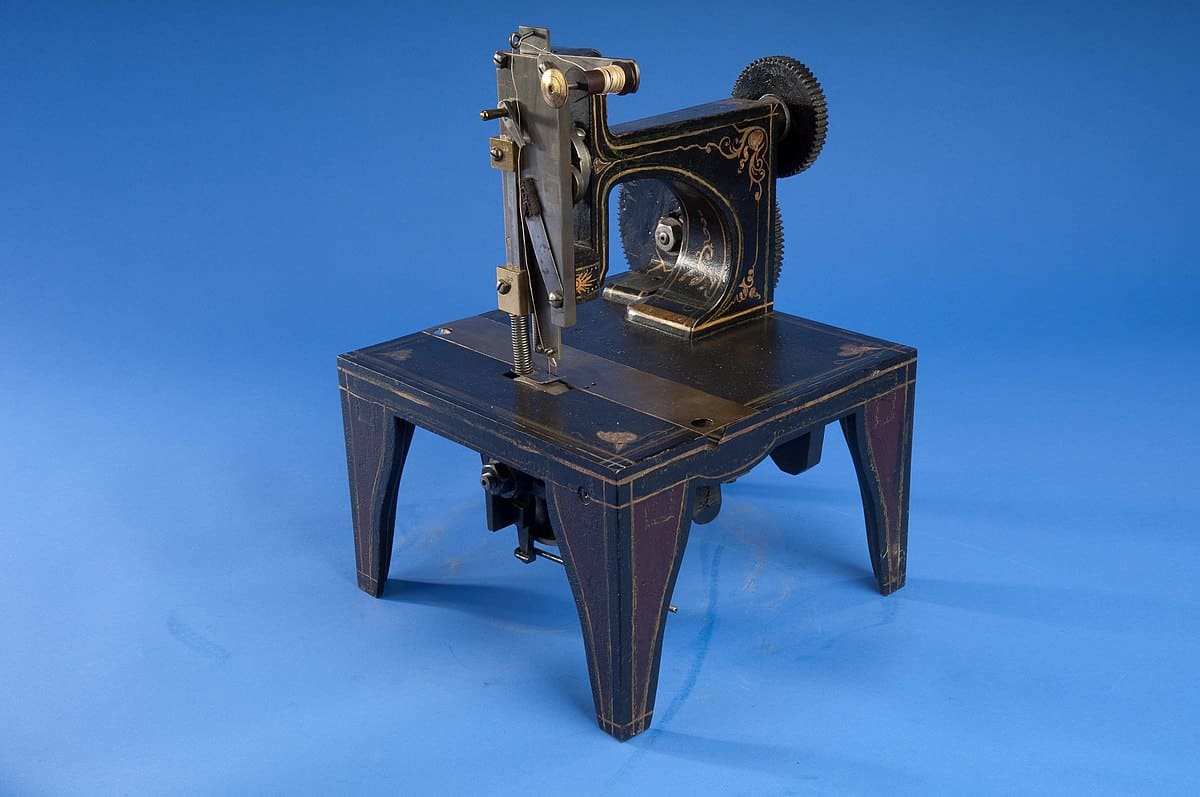
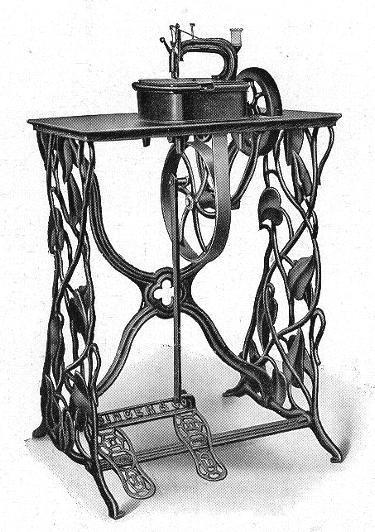
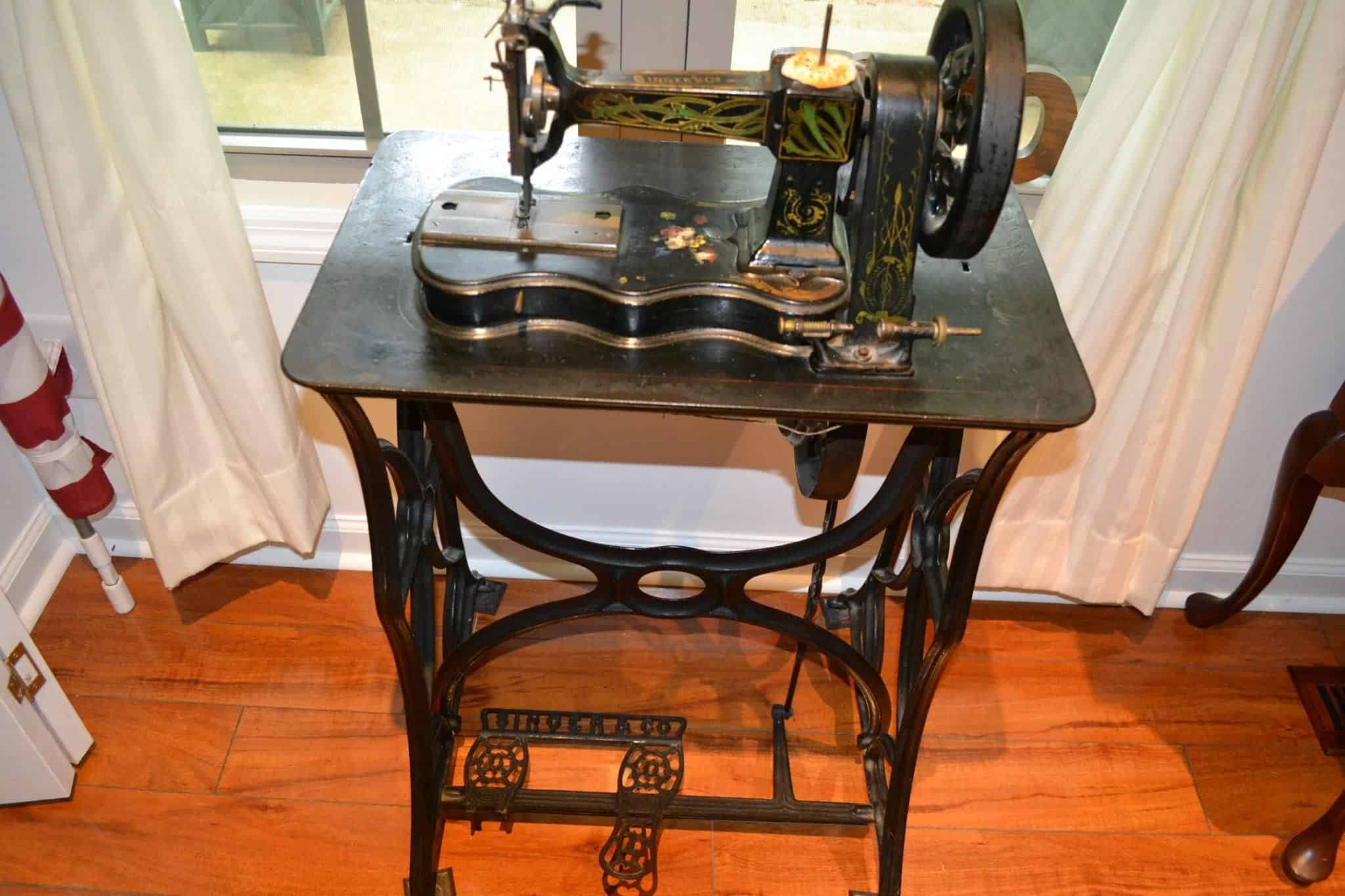
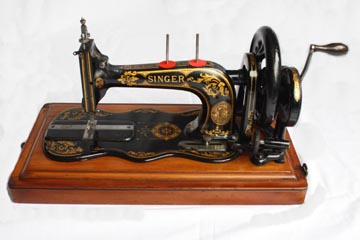
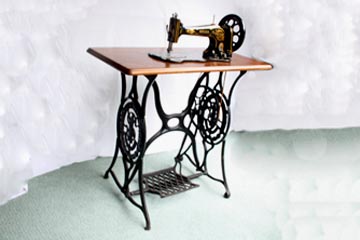
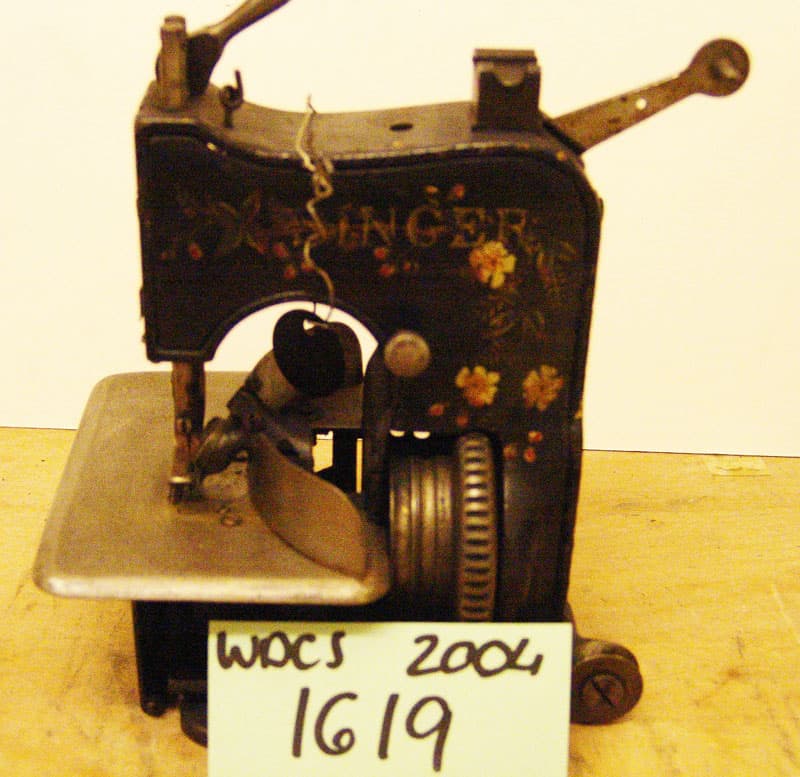
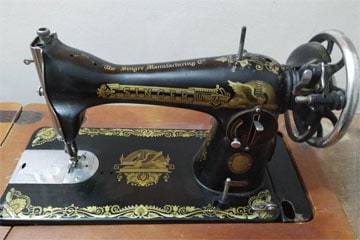
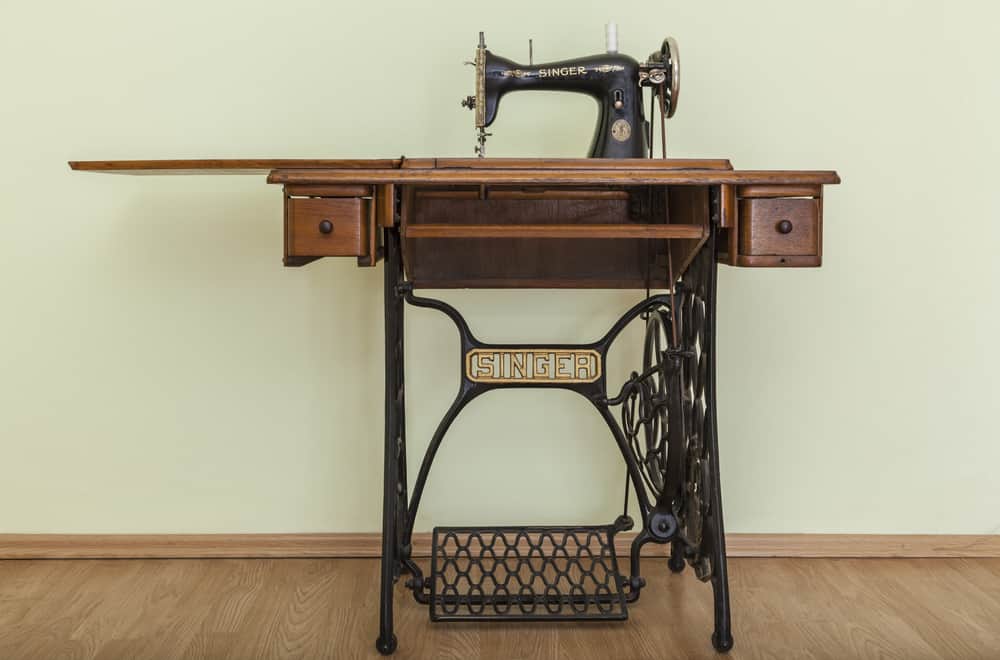
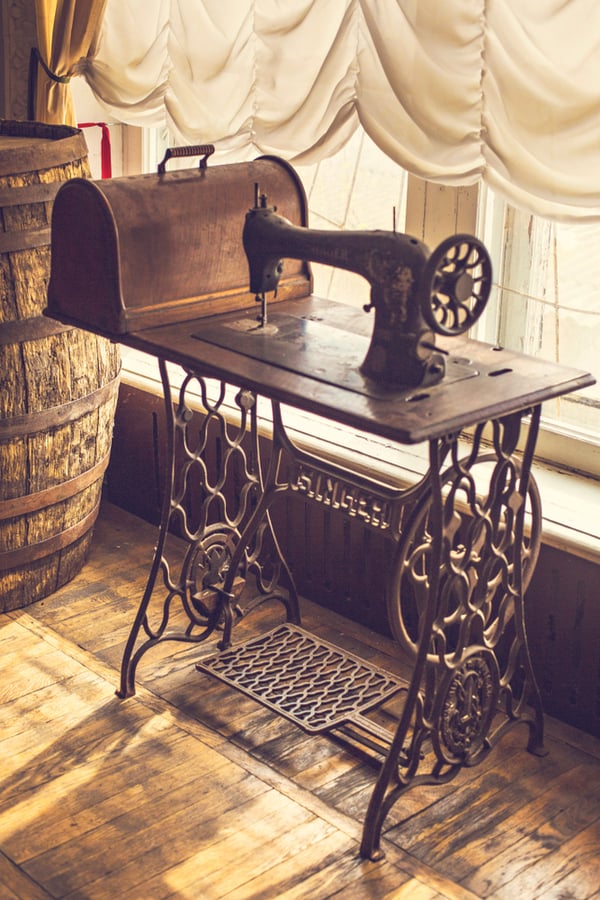
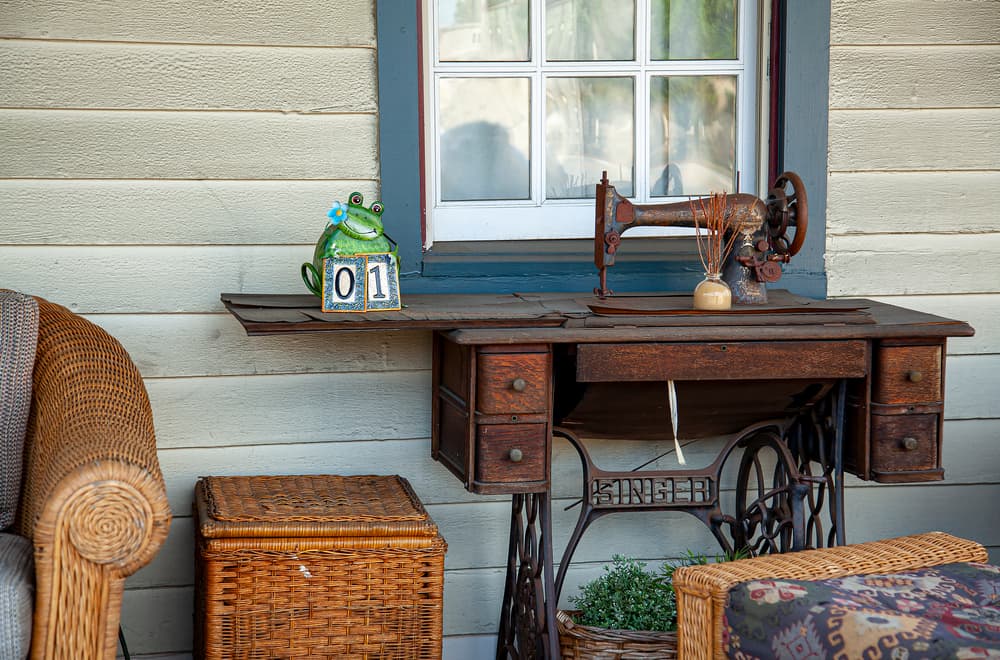
A friend has an old Singer industrial sewing machine (made in Great Britian) identified with brass plate “47KSV10” and it is missing a couple parts but otherwise is in great shape. Can you help with type machine, its use, parts availability and age? I will have serial number soon and perhaps that can help also.